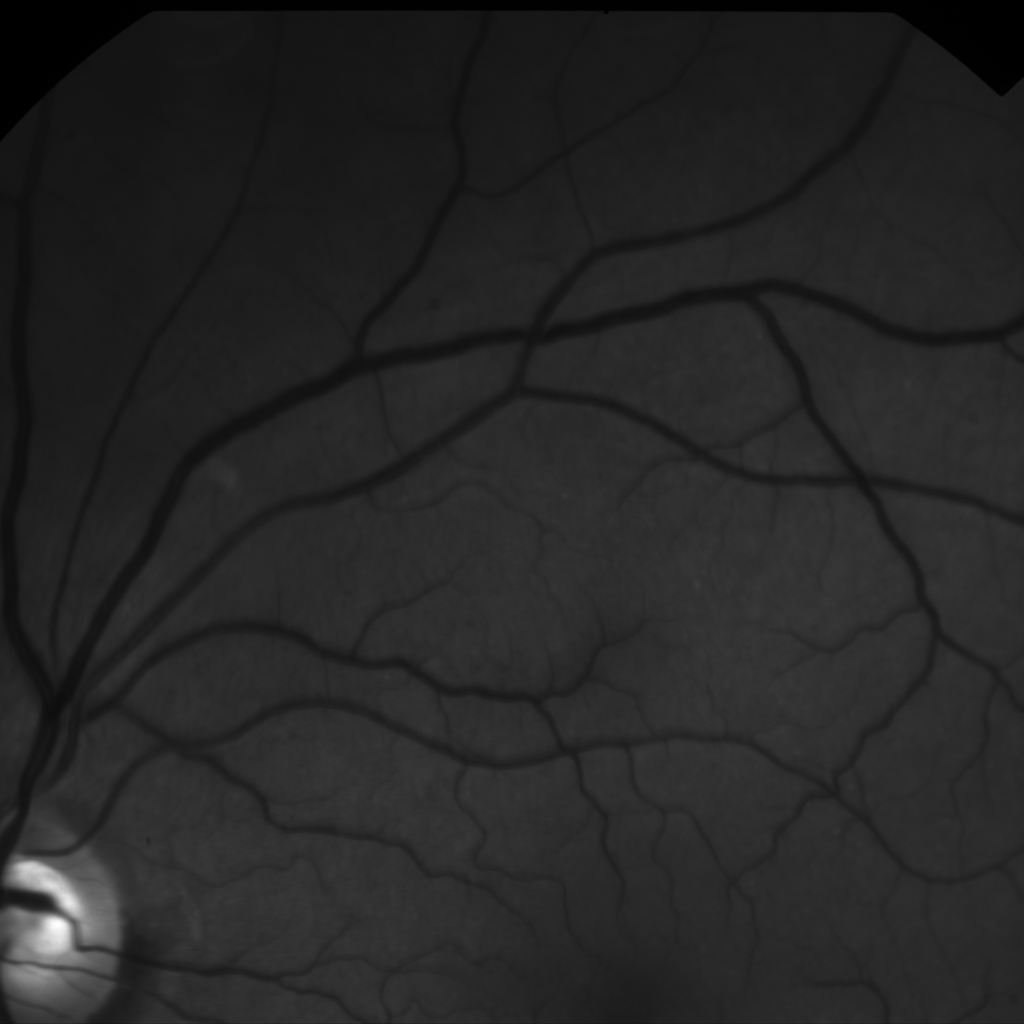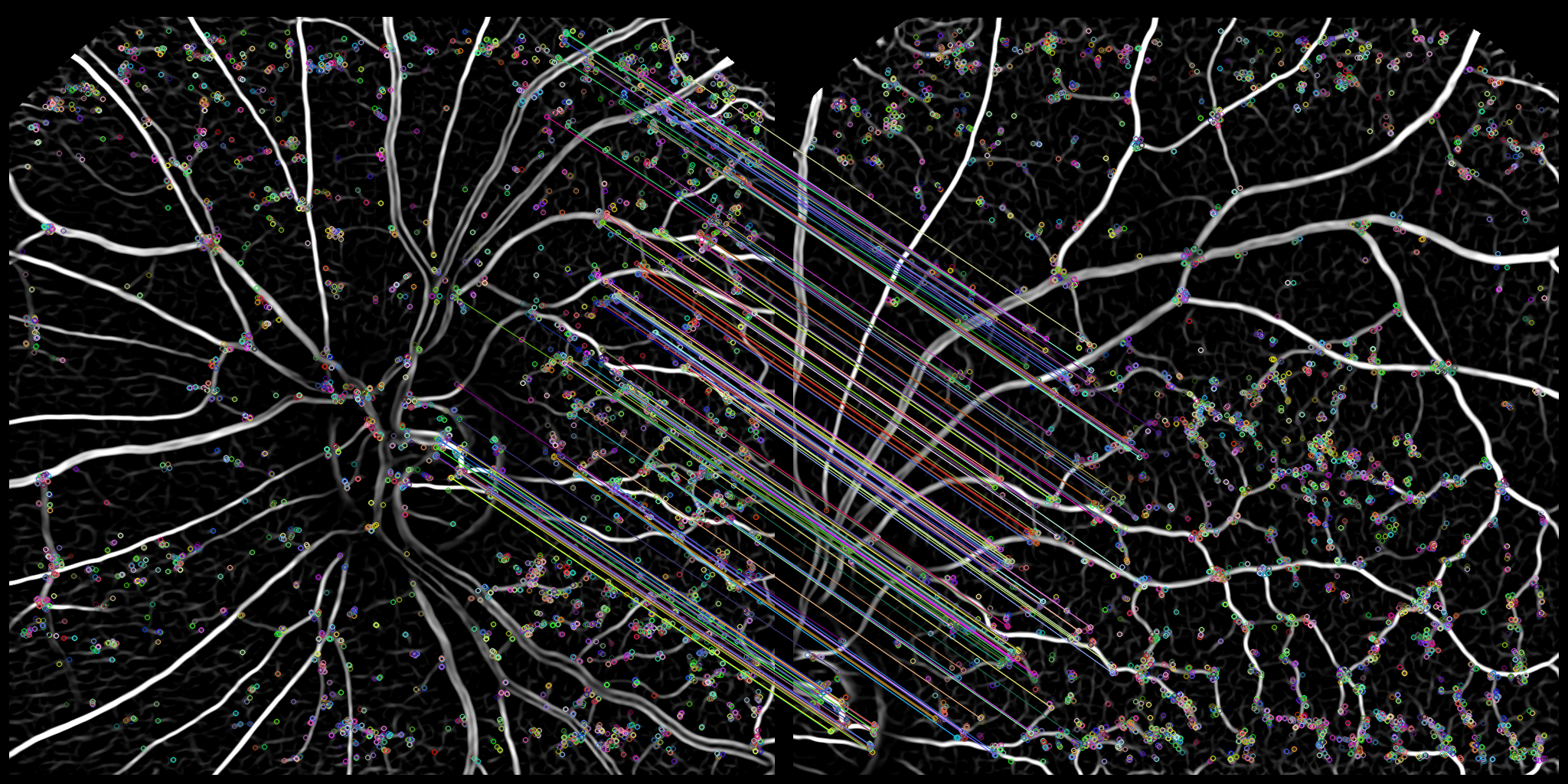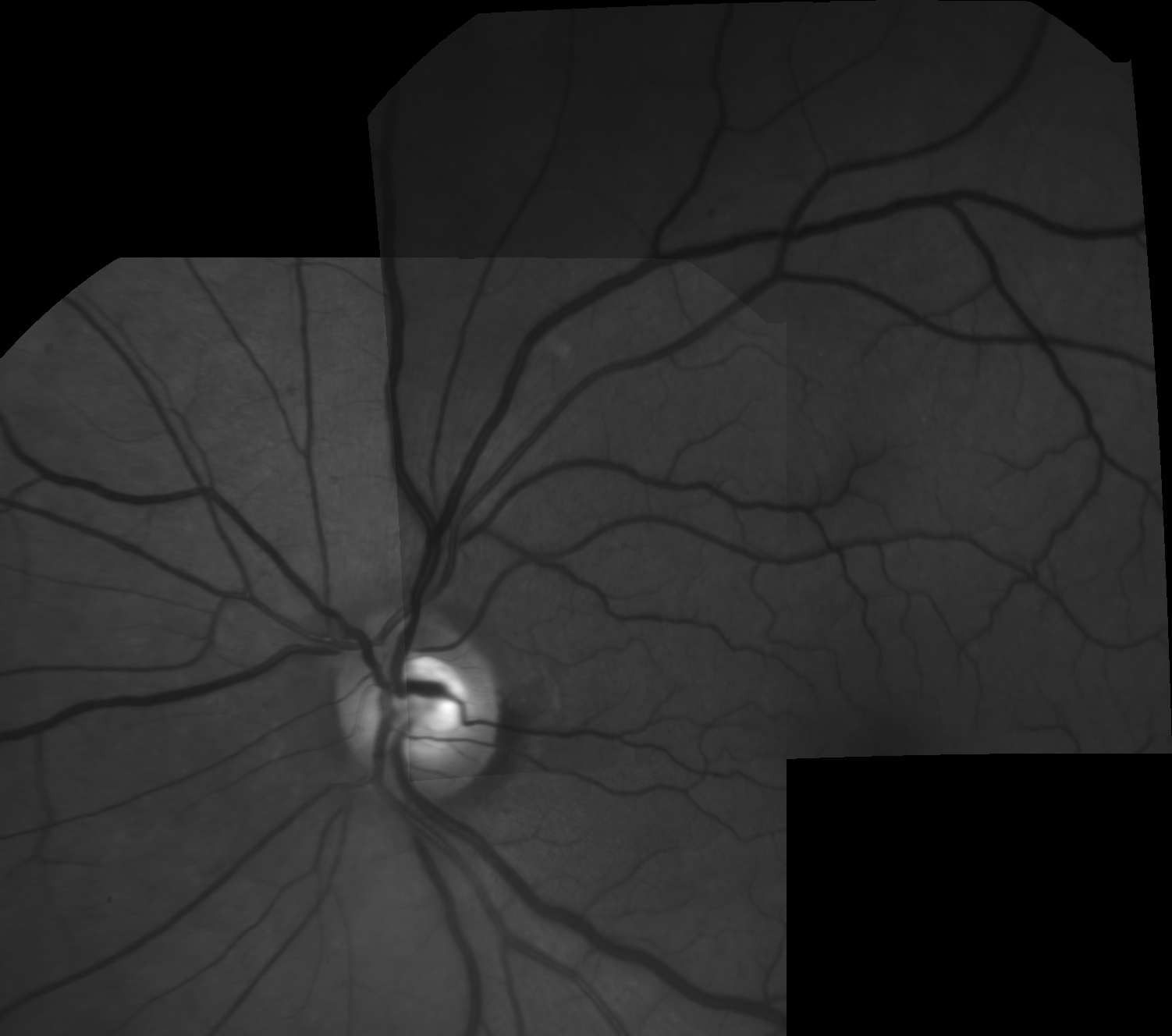Align retina images using OpenCV.
Select master frame, used as reference image to align images, and a set of frames to be aligned to the master
Use of Frangi-like filter to enhance the vessel structure of the retina image
Hessian based Frangi Vesselness filter
See __frangi2D().
Use of OpenCV ORB key point detector and descriptor extractor to extract key points on the Frangi-filtered image
ORB (Oriented FAST and Rotated BRIEF)
See __extract_keypoints().
Use OpenCV Brute-force descriptor matcher with normType=NORM_HAMMING2 and crossCheck=true to match extracted key points.
Use additional application domain specific constraints to drop definitely false matches.
See __select_best_matches().
Use of customized version of OpenCV RANSAC procedure estimateRigidTransform() for initial estimation
of affine or full quadratic transform between images, dropping definitely bad matches.
Application domain specific constraints are applied to drop bad matches.
All positive matches are used to estimate affine or full quadratic transform between images.
See __estimate_transform().
Use of customized version of OpenCV findTransformECC() to find precise mapping between two images in terms of the ECC criterion.
Motion Analysis and Object Tracking
See __ecc_align().
Full quadratic transform is used for precise align:
x' = a00 * x + a01 * y + a02 + a03 * x * y + a04 * x*x + a05 * y*y
y' = a10 * x + a11 * y + a12 + a13 * x * y + a14 * x*x + a15 * y*y
Use of __ecc_align() output transformation matrix to remap slave image to master frame, using OpenCV remap().
GNU/Linux or MinGW:
`$ make all`
`$ ./align-retina-images example/*.tif`





